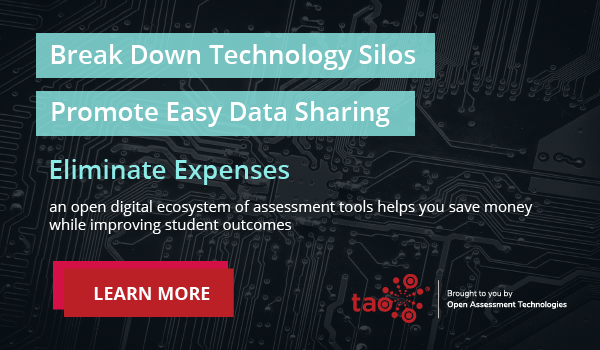As educators look to turn the chaos of 2020 into a sustainable strategy, it’s clear instructors and learners alike will continue to rely on digital tools. A robust, virtual toolkit emerged in the pandemic; despite classroom upheaval, many instructors found value in learning technologies and want to continue implementing them in remote or hybrid learning models moving forward.
Digital assessment tools are one critical component of successful virtual learning, and they benefit every player in the game in more ways than one.
In this post, we’ll walk through four ways digital assessment tools use the power of data collection to improve the virtual learning experience by leveraging real-time insights and performance tracking to set students and schools up for data-driven success.
Up-to-date, highly accurate grade books
Whether remote or in-person, grading assessments and other assignments take a heavy administrative lift.
- Pre-set scoring tools that process objective questions and calculate grades
- Built-in affordance for subjective questions, leaving them open for human graders
- Accessible student-teacher feedback features inside the platform
In-depth student performance tracking
With less time spent on manual grading and recording, teachers gain back valuable time to address each student’s classroom performance and learning needs. And the right digital assessment software will support this effort with detailed insights into test results and student engagement.
- identify each student’s strengths and areas for improvement
- scale up these reports to measure learning trends across the whole class
- determine which topics were well-received and which ones they may need to revisit
Most notably, teachers can store assessment results and performance reports right in the platform for easy access. From there, they can export it into an external visualization tool or share it with parents and other staff members.
Holistic measures of assessment effectiveness
Student performance is a key element of strategic improvement and curriculum updates, but instructors should have the tools to also evaluate the effectiveness of each assessment or assessment type.
Reporting tools can be configured and modified to assess variables from wording to test length, or question structure, offering teachers another facet to evaluate course effectiveness and student learning outcomes.
For example, if most students score higher on multiple-choice questions than they do on true/false ones, regardless of subject matter, teachers may look to adjust their testing methods. Perhaps students perform higher on untimed, formative assessments than they do on time-sensitive exams full of technical questions. Or maybe they benefit from personalized adaptive exams over traditional ones.
A unified view of teaching and testing data
Better data insights lead to better decision-making, especially as instructors and staff chart new territories in non-traditional learning models. Therefore, they need reliable tools that aggregate high-value data in a single location and promote interoperability by enabling knowledge sharing across classrooms, departments, and institutions.
The right digital assessment tool can record, organize, and track all of this data automatically, creating a unified dashboard where teachers can configure custom reports, analyze trends, or dig deep into individual performance.
–
At TAO Testing, we believe your digital assessment tools should do more than provide a surface-level record of exam results. Our platform is designed with innovative built-in features that empower staff and students to succeed in any learning environment. Our solutions seamlessly integrate with your existing toolset to unify your operations and keep you connected.
Ready to take control of your assessment data? Contact us today to get started.

